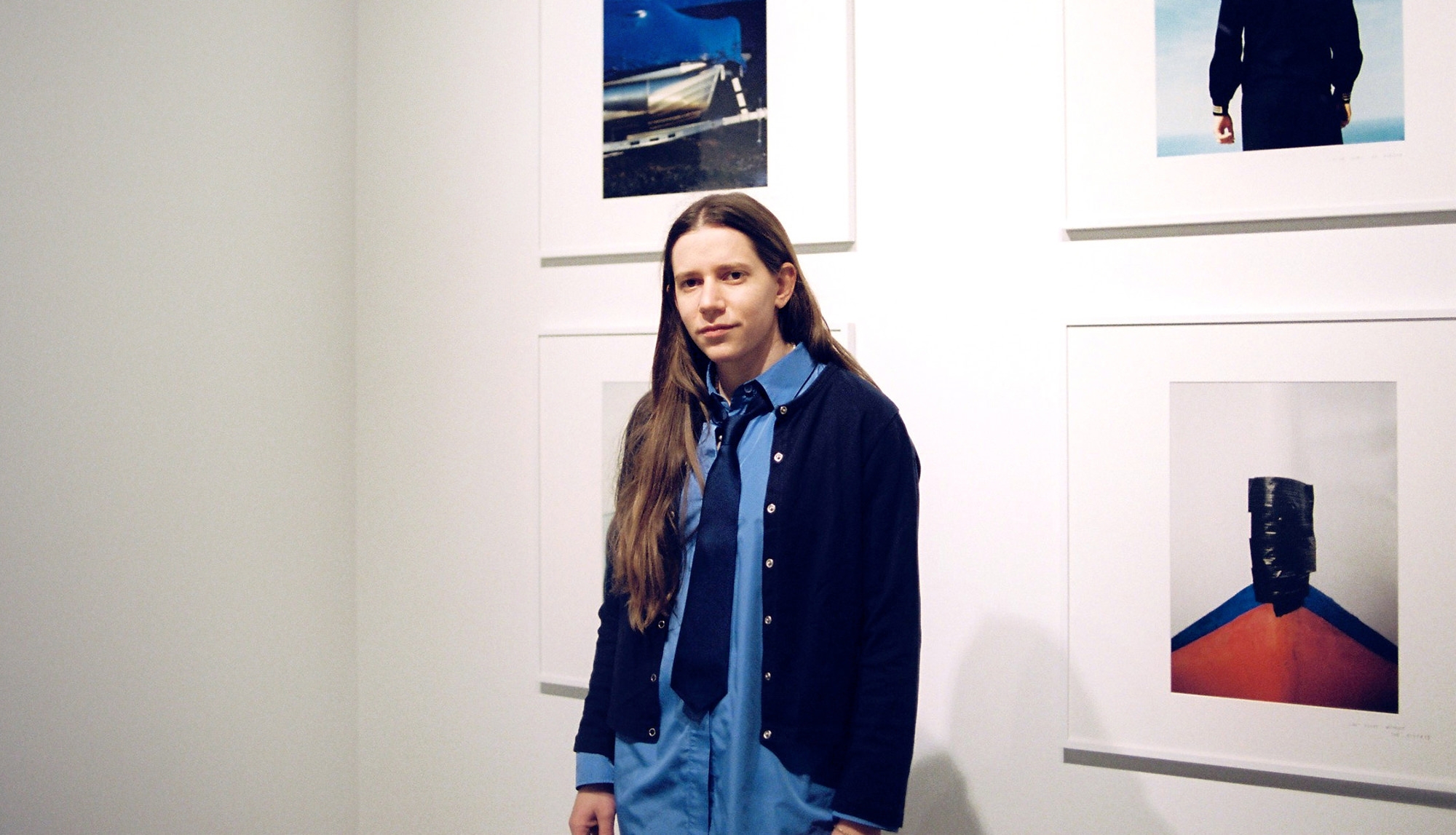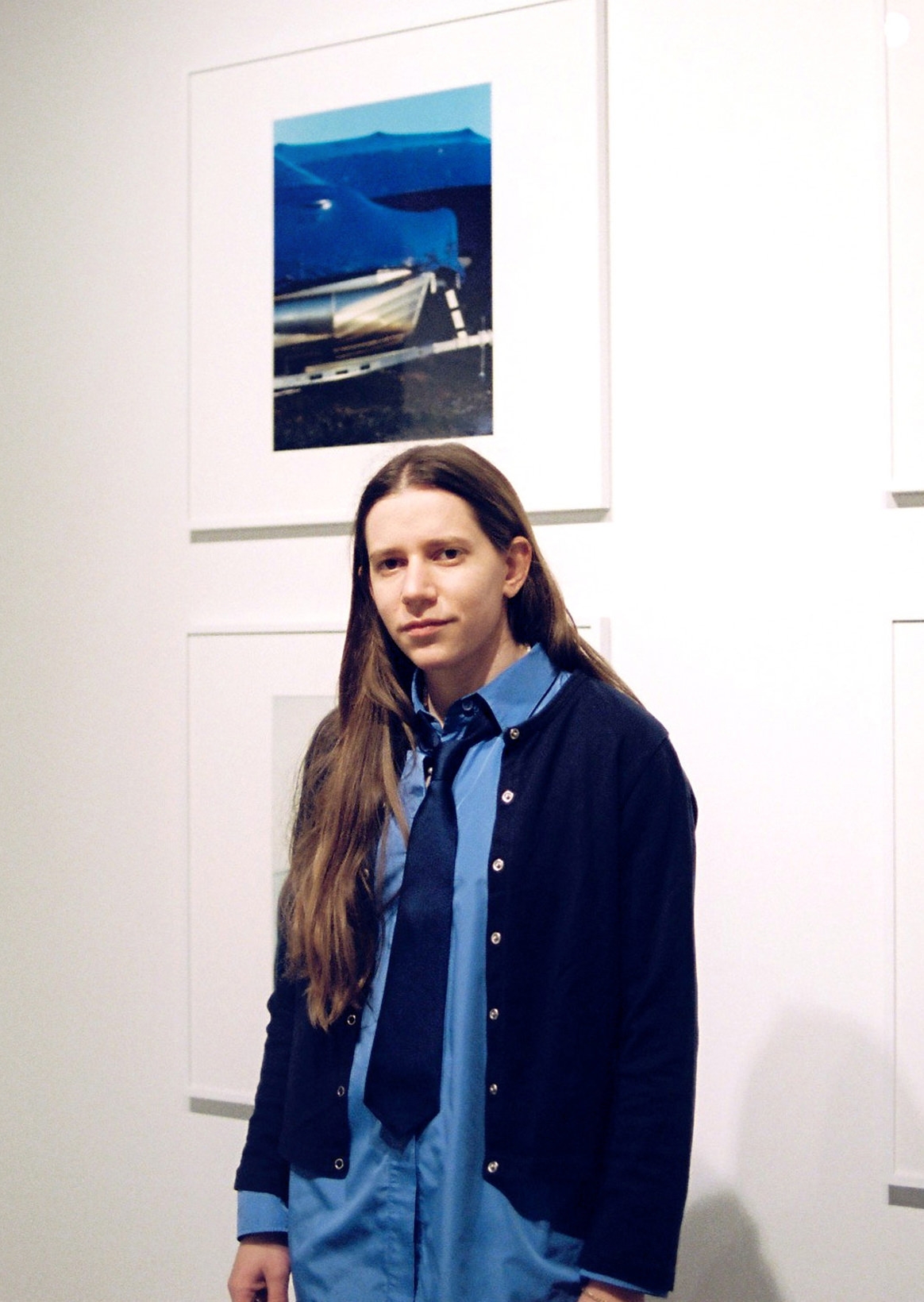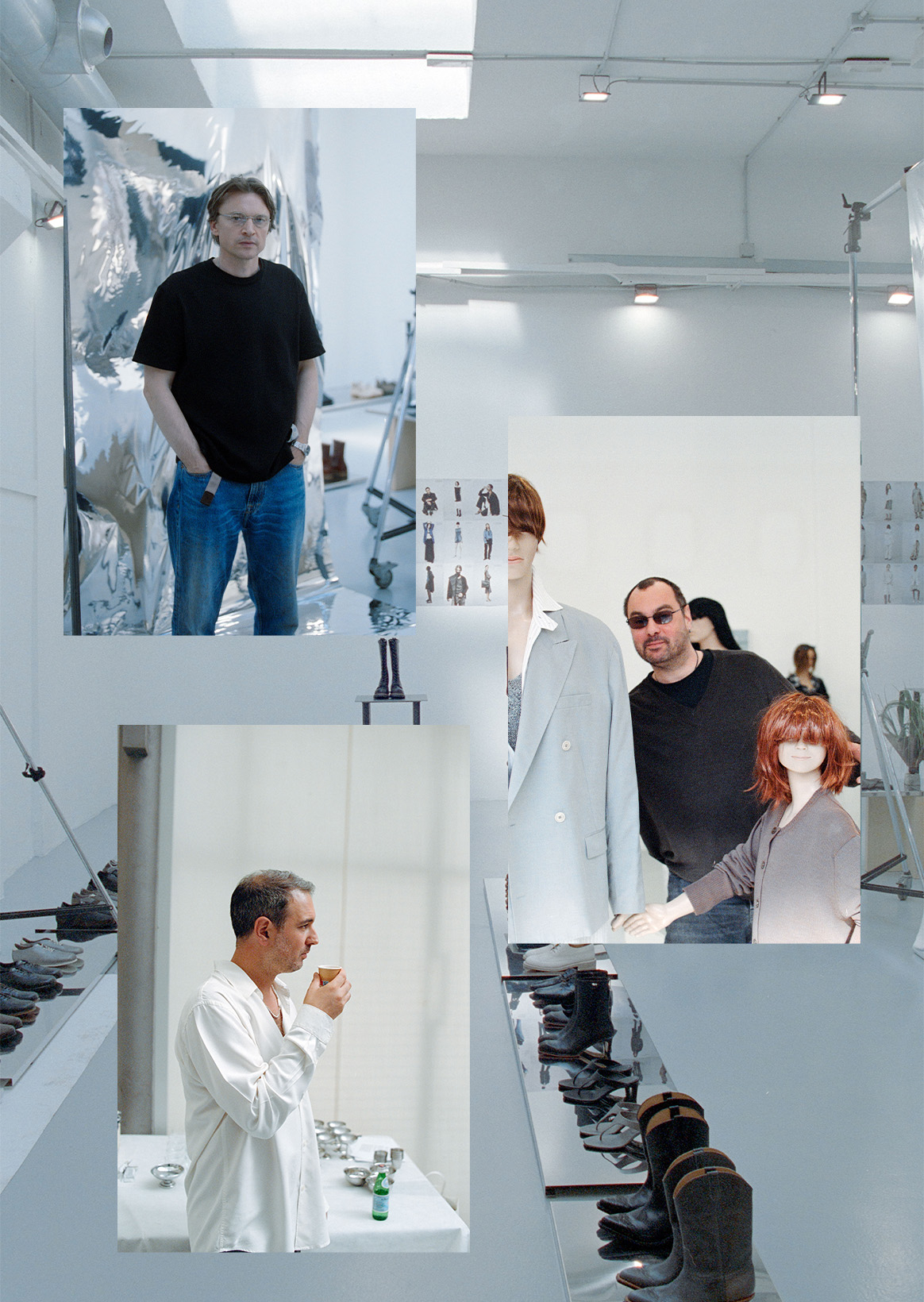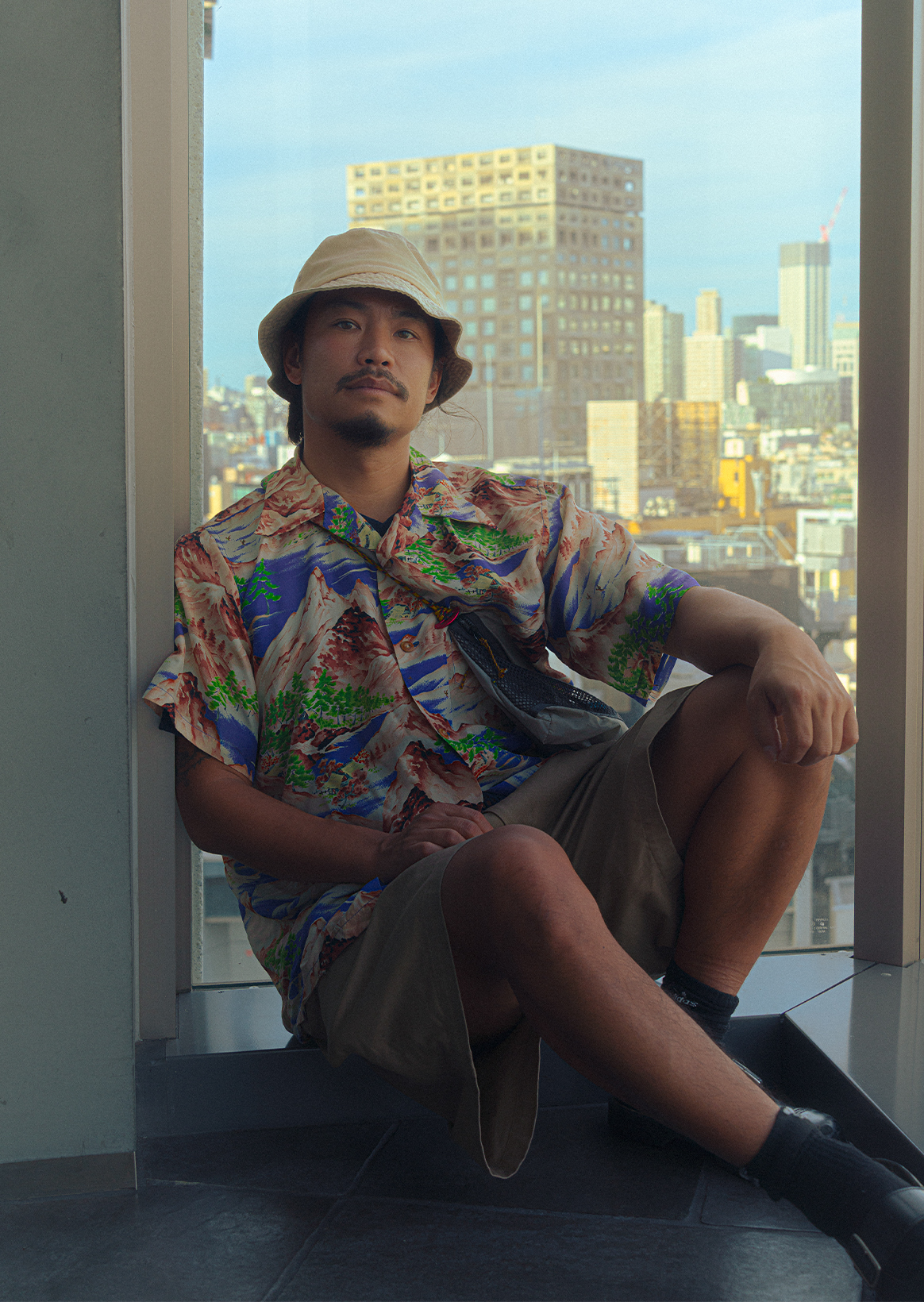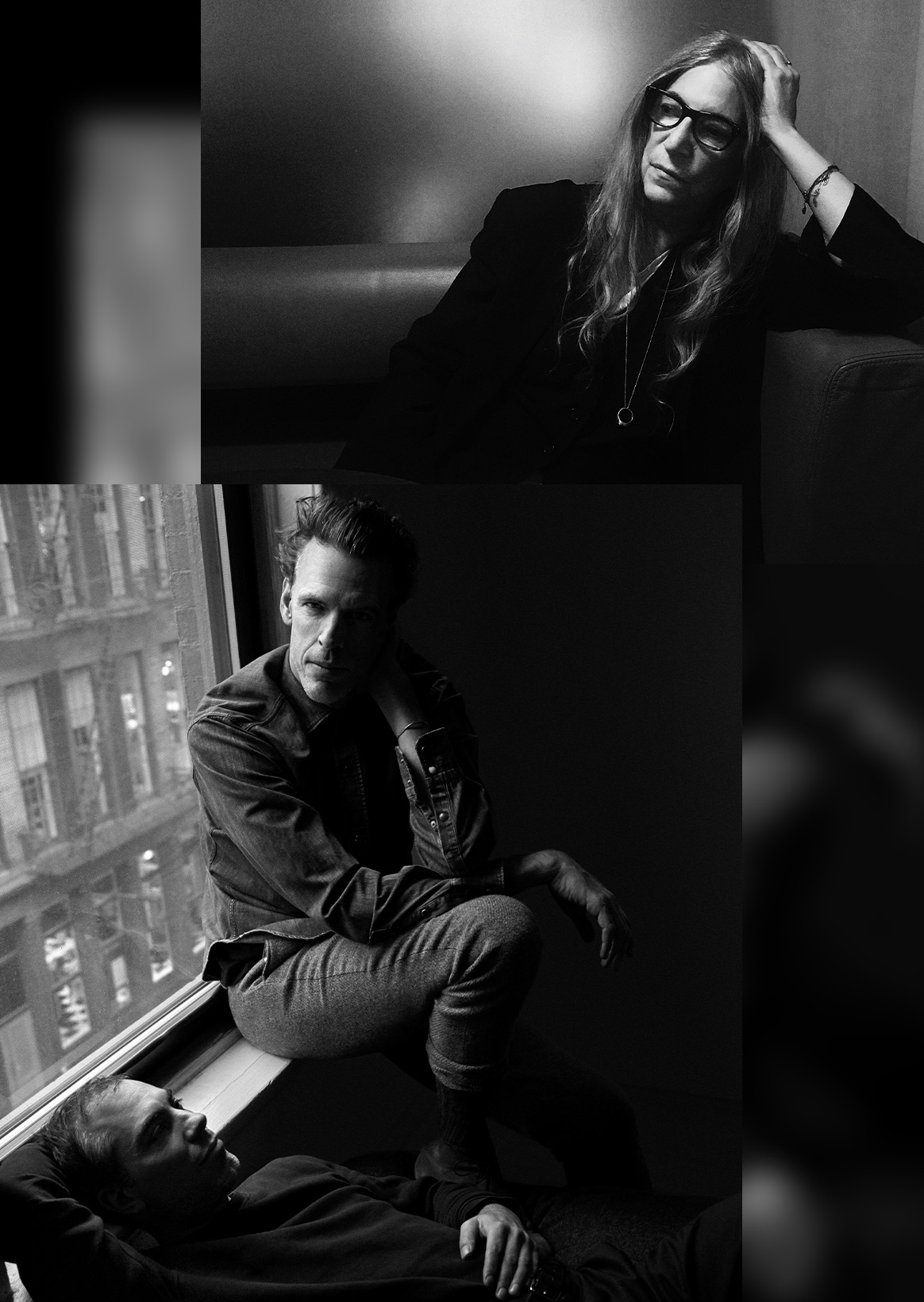Coco Capitan is a Spanish artist who has attracted attention from all over the world in collaboration with various brands such as GUCCI, A.P.C., COS, NIKE, DIOR. Her first solo exhibition in Japan, “NASIVY: in fifty (definitive) photographs,” is currently being held at PARCO MUSEUM TOKYO (May 9). Based on a solo exhibition in London and Amsterdam, this exhibition, which is the completed form of the series, will exhibit 50 hand-printed photographic works along with found objects (Saylor clothes embroidered by Koko and three flags of "Lost Naïvy", which will be unveiled for the first time. In addition, a collection of works, which will be the final version of the "NASIVY" series, will be published from PARCO Publishing in June.
Two children like angels standing innocent figure on board, the back of sailors looking at the horizon, the woman jumping half naked as if released into the dark blue sea……Somewhere nostalgic, beautiful photographs are dedicated to the imaginary world of the sea where the lost "Naïvy" live. We can't help but project ourselves on a clumsy and immature human image with the duality of innocence and maturity. It will be gently accepted by Koko's hand as a lost member, and will feel drifting together on the sea. We heard about the composition of this exhibition, the commitment to print, the episodes of childhood, and his thoughts on Japan.
- Photo
- Sachiko Saito
- Text
- Momoko Suzuki
- Interpreter
- George Bodman
- Edit
- RIDE Inc.
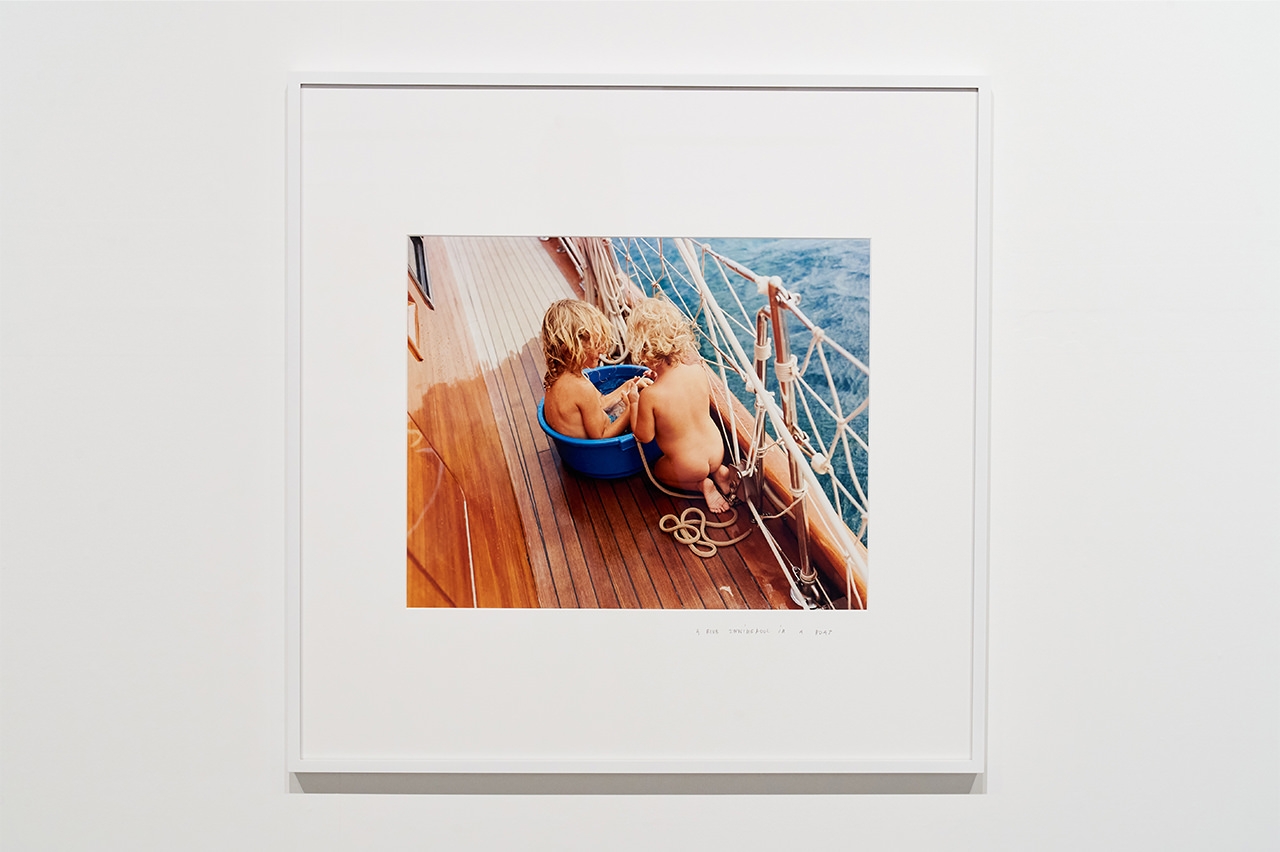
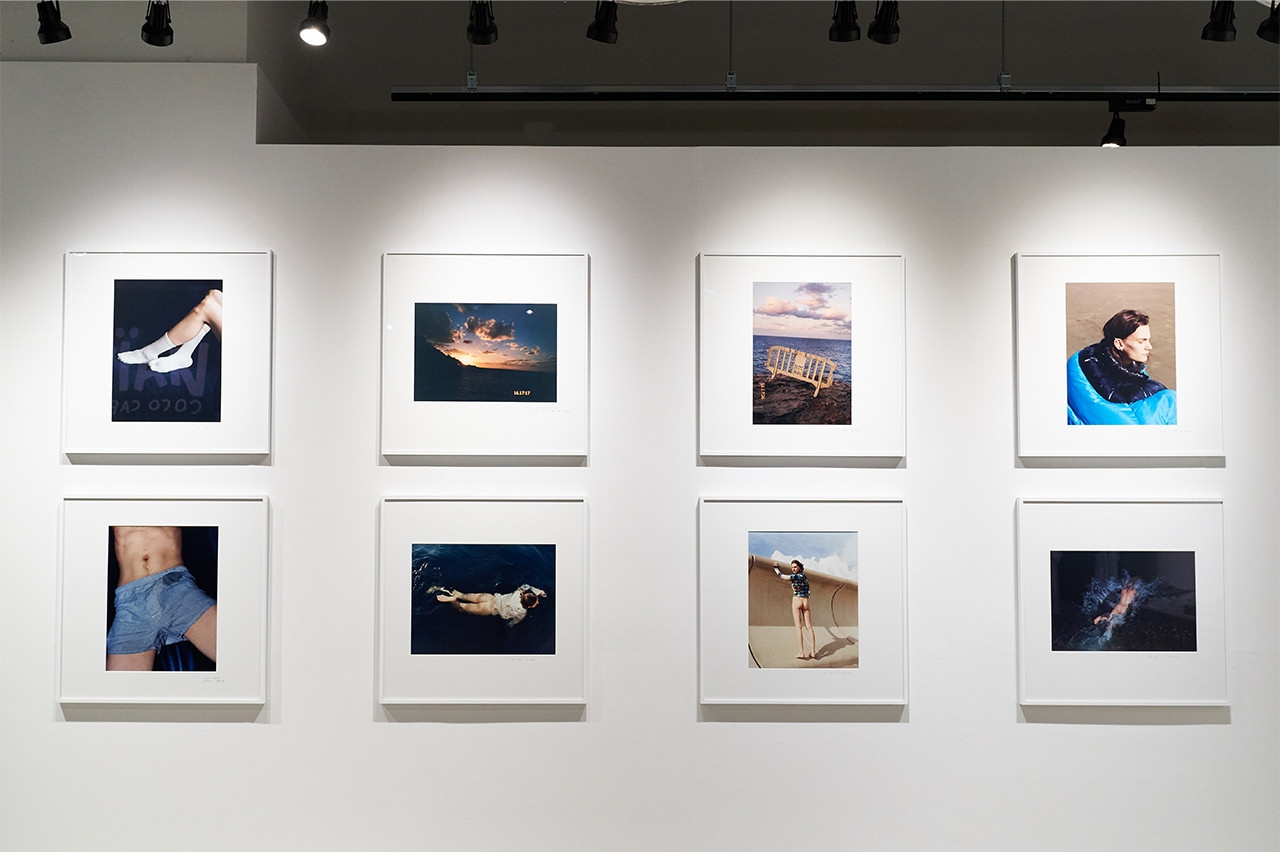
——Please tell us about the concept of this exhibition.
"Naïvy is a coined word that mixes Navy, Navy, dark blue, and Naïve, which means innocence and innocence. I have loved the sea since I was young, and I have been attracted to the sea all the time. In the same way, I have always been interested in sailors. This is the series that I started to find out why I was so attracted to sea and seafarers. I started to ask questions, and I haven’t found the answer yet.”
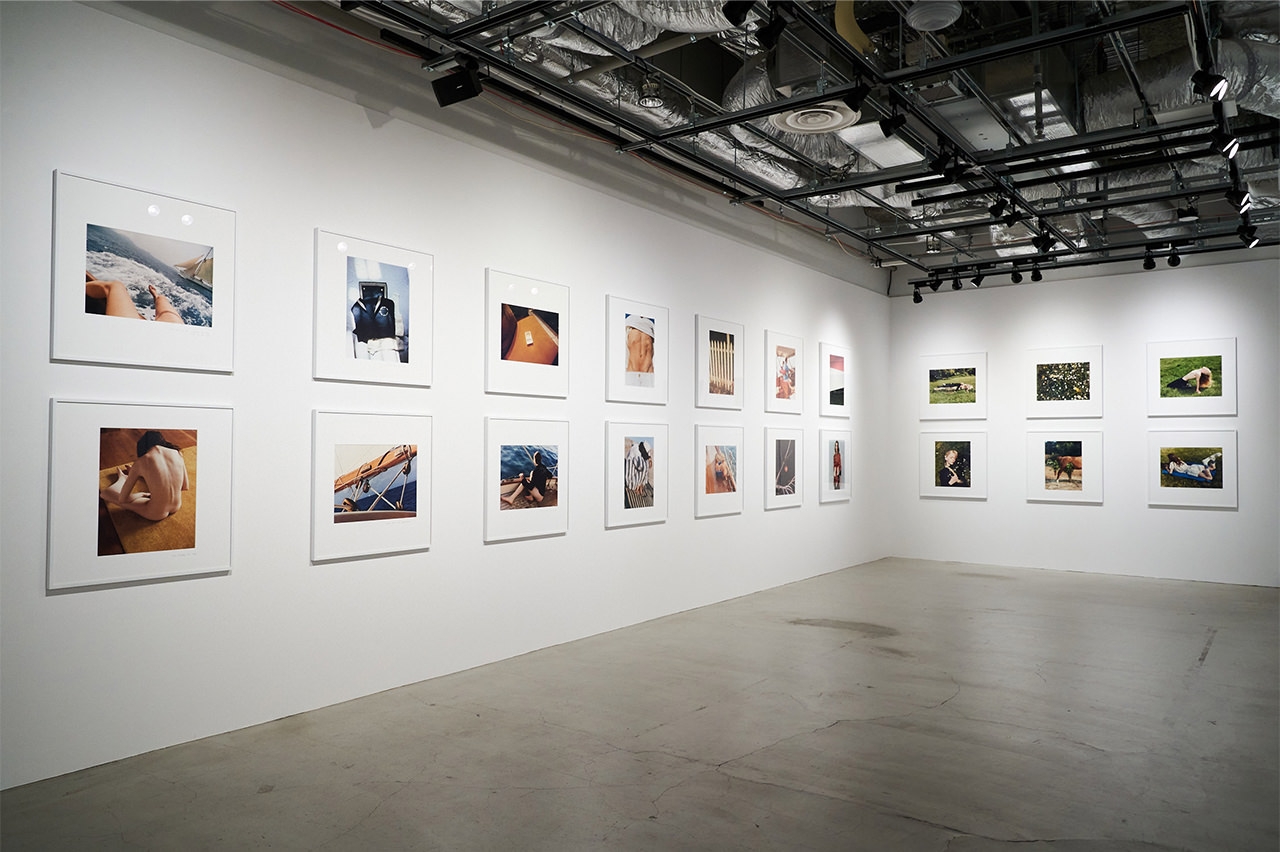
——With this exhibition, why did you decide to complete the Naïvy series?
"This time, as the final form of this series, I chose the 50 pieces that I like most from the photos I've been taking for 10 years. From the archives I took to shoot, I tried various things, such as size and technique, and tried them. By doing this, I thought I could move away from the ten years of obsessed with the sea and move on to the next project.”
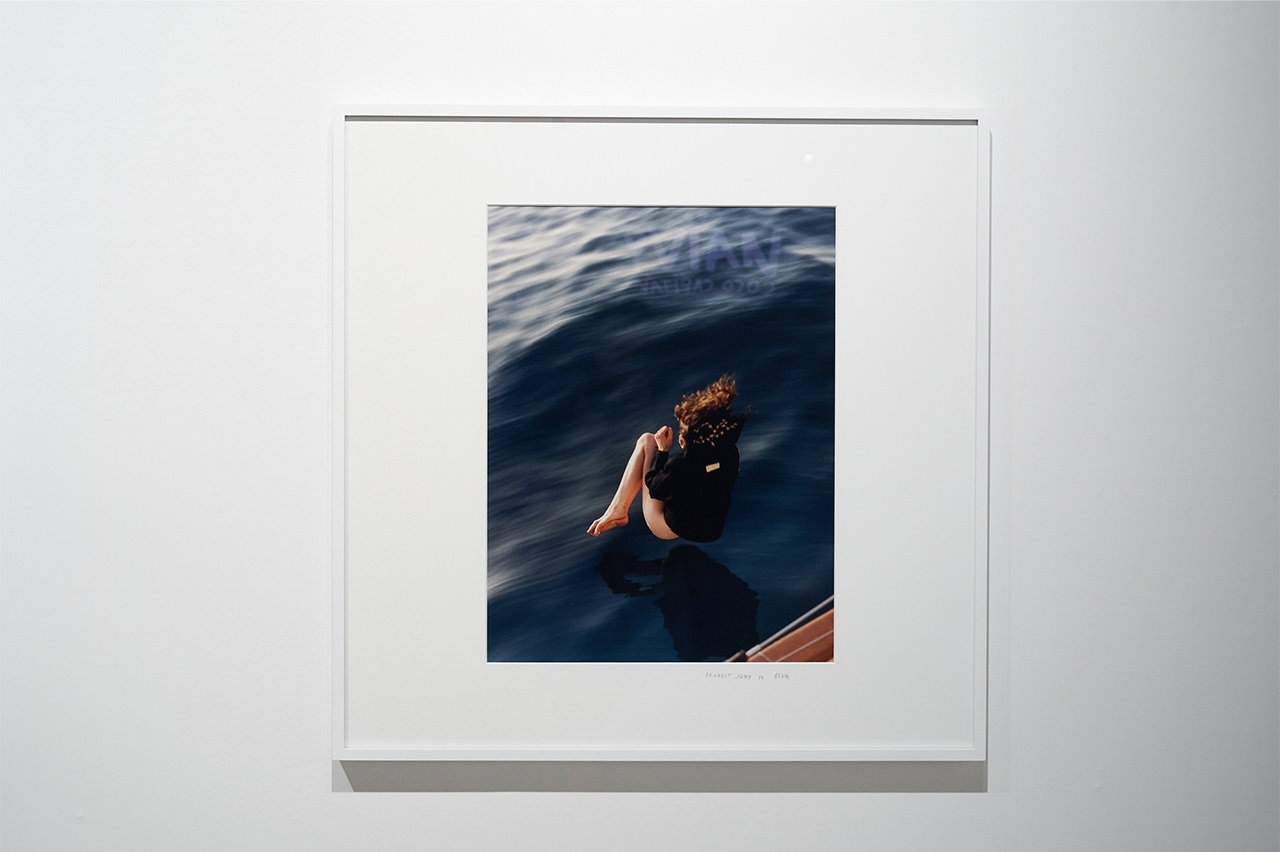
——When you were young, did you live near the sea?
“I was born in Seville, Spain, and I’ve been learning synchronized swimming since I was seven years old. It was a very strict team, so I had training every day from 4 hours on weekdays and from 10:00 am to 10:00 pm on weekends, so I had to practice seriously. When I was 11, I moved to a town called Cadiz on the edge of Spain, and unfortunately there was no synchronised swimming team or pool in that town. But instead, there was a sea there. In a sense, it was the sea that freed me from the harshness of synchronized swimming. No swimming in a square box or rigorous training, I started cycling on the seaside road every day until I went to school. By spending that day, the sea has become a symbol of freedom, freed from pressure and time, and finally became a place where I can release myself.”
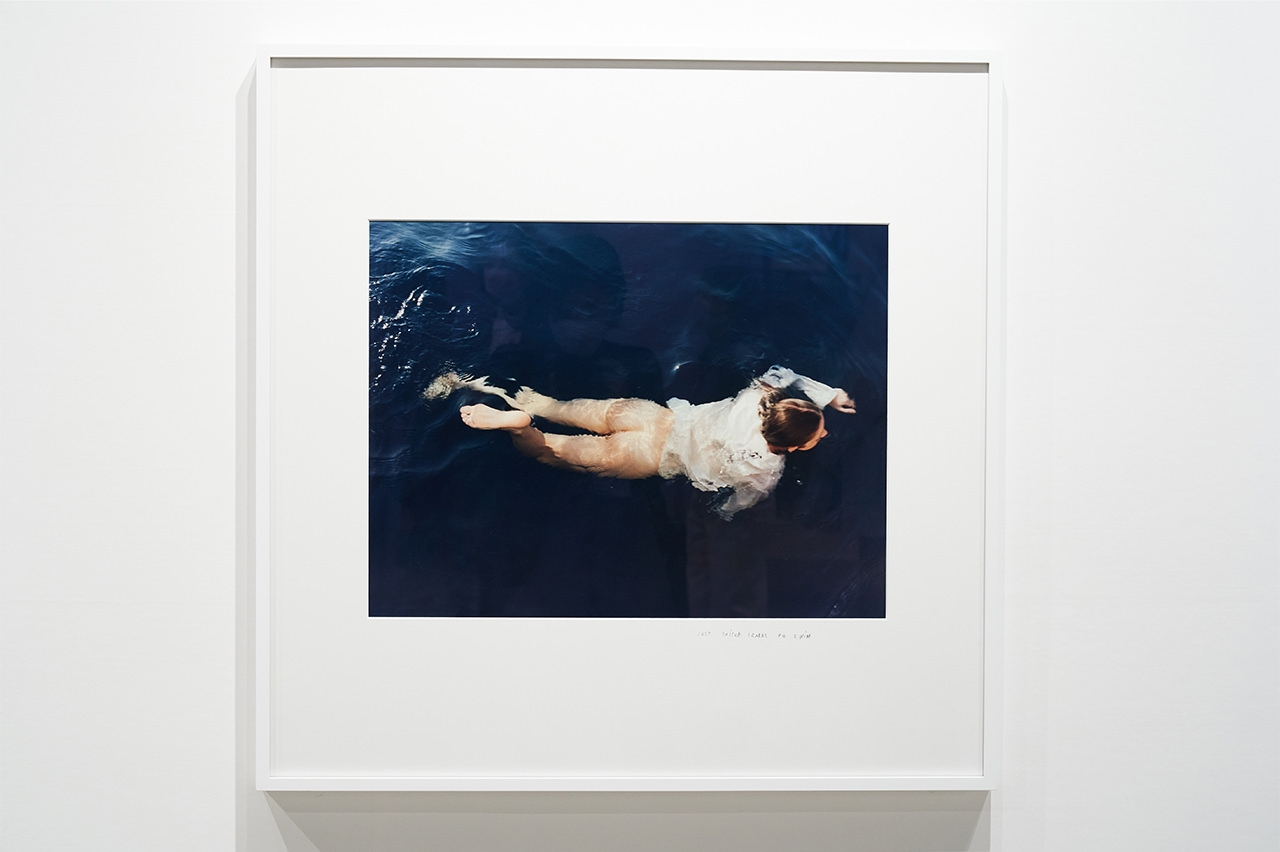
——What kind of childhood was it? Have you ever felt that you have a strange feeling different from others?
"In my childhood, I had the impression that I was isolated rather than feeling different from other people. I was born and raised in a small town, so I had few friends who could share interest in art and photography. Synchronized swimming was severe, and unfortunately I was irritated by my teammates, and I also felt alienated within the team. But the classmates in the school were very kind and they were getting along well. I was a person who was able to study with a geek personality, so I taught my homework and showed me the answer during the test (laughs). I was aware of the difference in interest from others, but I thought the difference was good.”
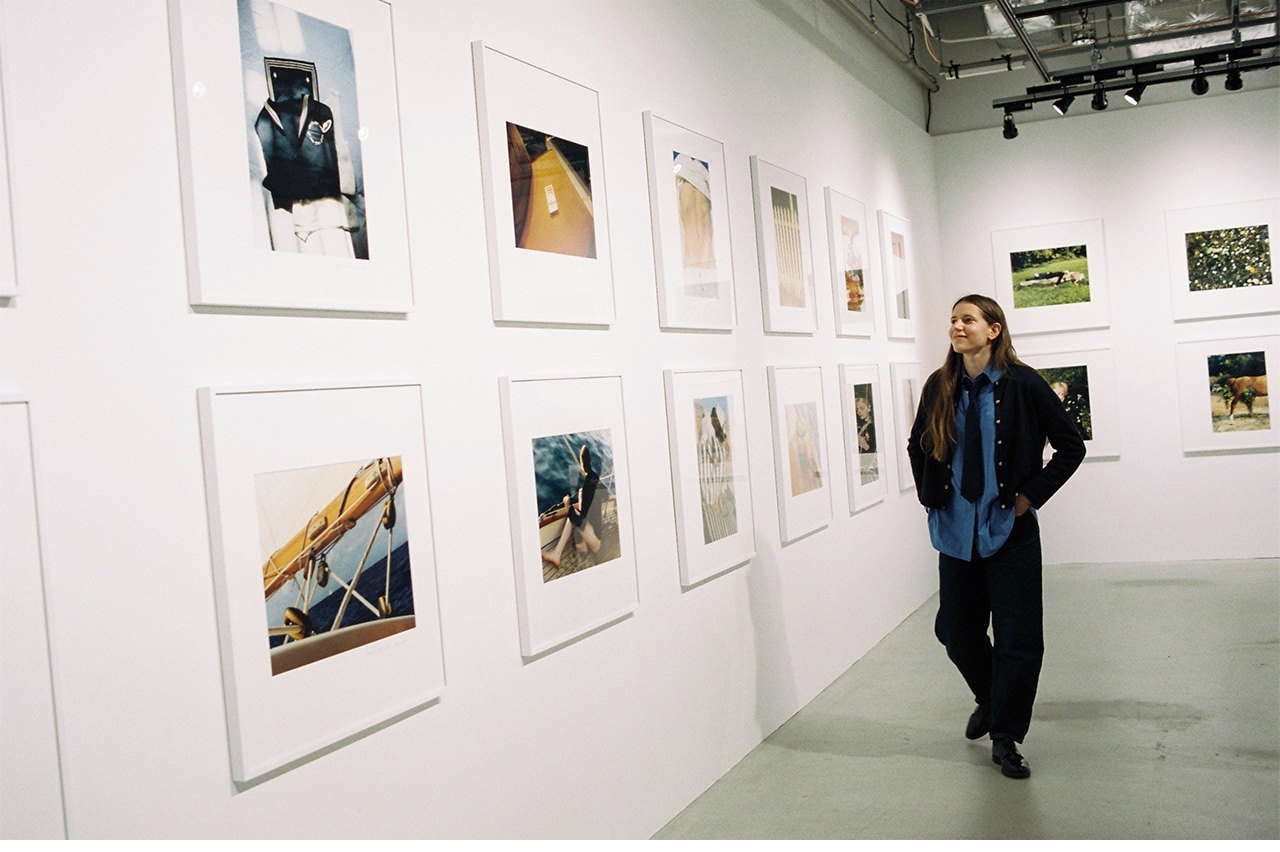
——Are the sailors and found objects sailor clothes inspired by the scenery I saw when I was young?
“No, the Spanish Navy is not like this. These are American sailor clothes used during World War II, and I think they are the first images that come to mind when we imagine navy or sailors. In that sense, I use this sailor uniform symbolically. In addition to the Navy, I'm interested in the design and structure of ships, so it's a motif, but it's not the appearance of a sailor I've seen in my life, but it's just a symbol of an imaginary sailor."
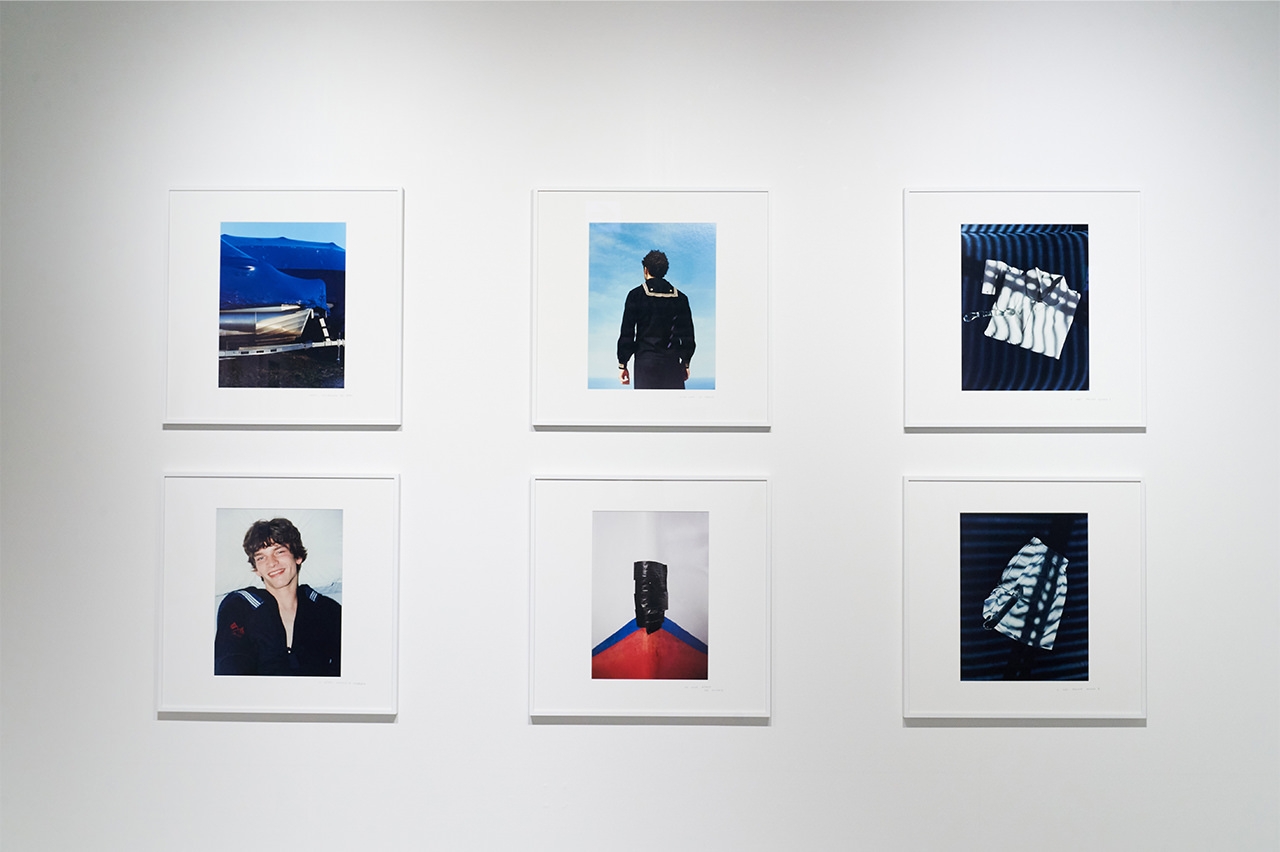
——It is often used to have half body uniforms and half body naked, but what is the intention of doing?
“I think uniforms mean that they belong somewhere and are symbols of communities and organizations. And the fact that the half body is naked represents the symbol and individuality of the individual. You belong somewhere but have not lost your personality. In a sense, some jokes are included, but because of the desire to break down the form of belonging somewhere in the uniform, for example, the sailor clothes are embroidered, a symbol of individuality. I thought that the embroidery would break down the status of belonging to some organization and create individuality."
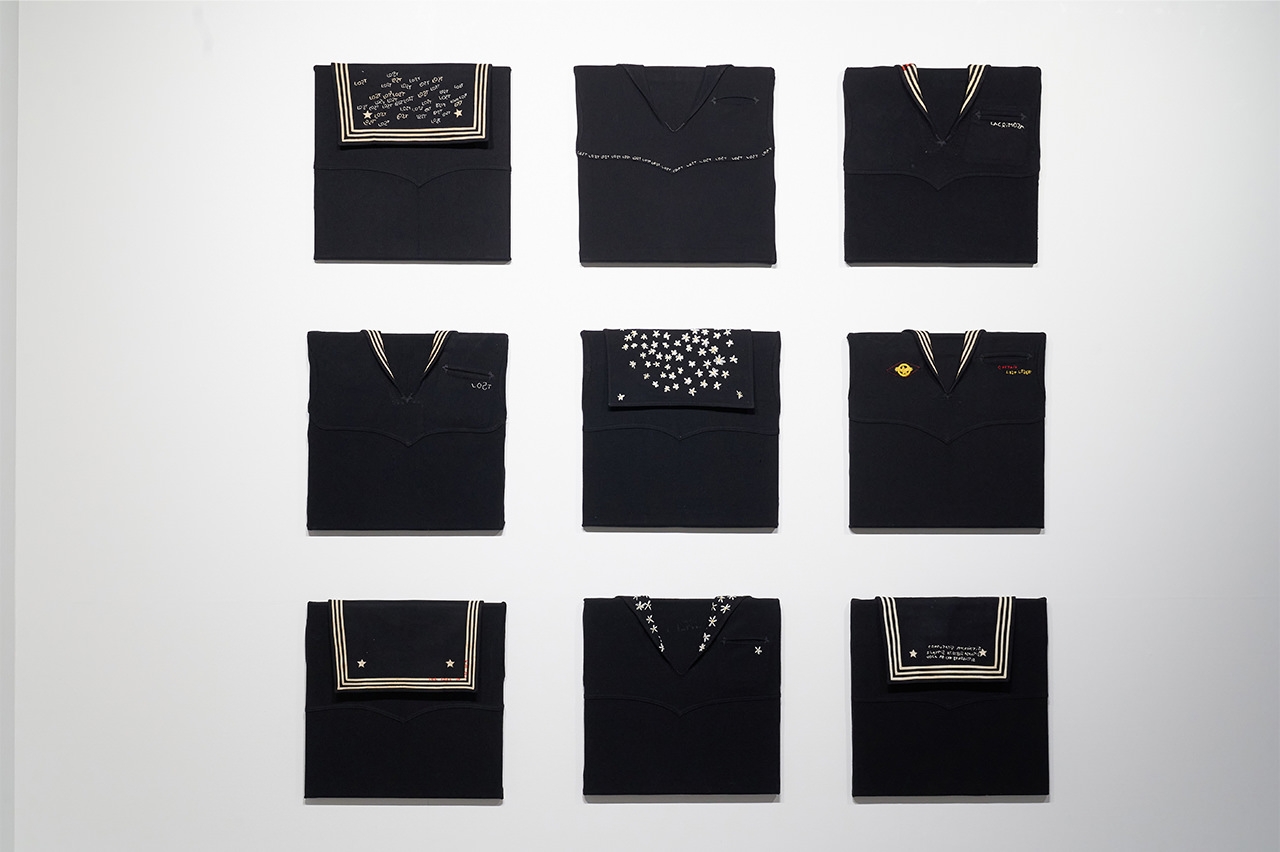
——Man is made to realize that he is a creature that struggles between discipline and freedom.
"When I find it difficult for me to fit into society, I sometimes feel that it is hard to live by being bound by rules. Especially since I earn a living through art, I have faced not only simple things, but also painful things and things I don't want to do. In the art world, you may feel a little old style, but I think you have worked hard to build up. But from one point on, I began to doubt that I had to care too much about others and that I had to live while always being asked for the right answer. I didn't want to live according to what I was told. “I used the word Lost in this series because I wanted to bless everyone to get lost in order to find a comfortable place for me, to get lost once out of the eyes of society and others until I got the place I wanted.”
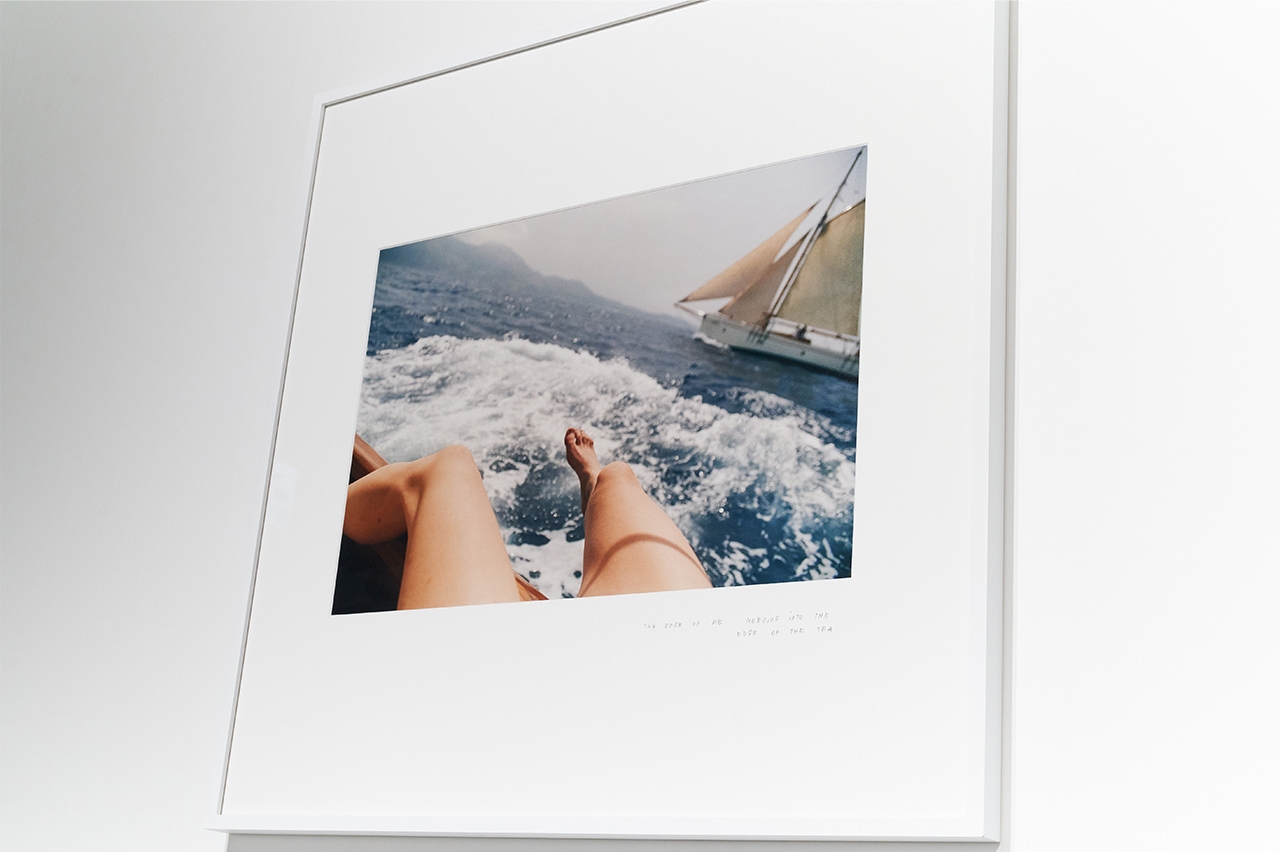
——Daisy flowers often appear as key symbols in photographs and embroidery of sailor clothes.
"Daisy is also attracted to nature just like the sea. Blue and sailor clothes and Daisy. These three things I can't understand, but for some reason I've been attracted to them for a long time and have become common keywords in this series."
——If sailor clothing represents a group, is Daisy a symbol of liberation?
"Maybe, right? It may be linked to a symbol of freedom. I don't know in Japan, but in U.K., Daisy is a weed-like flower that blooms all over there. But it's very beautiful. I think there are many people who like hand-salted flowers, but I love flowers that bloom on the roadside like Daisy. It is also a symbol of freedom, and you can feel powerful, so I am very attracted to you. And one more thing, thank you for everyday life is my theme. Rather than taking up things that are more unique or unique than necessary, there are many beautiful things in everyday life, and I would like to use them as a motif. Perhaps the awareness of gratitude for everyday life is manifested in Daisy."
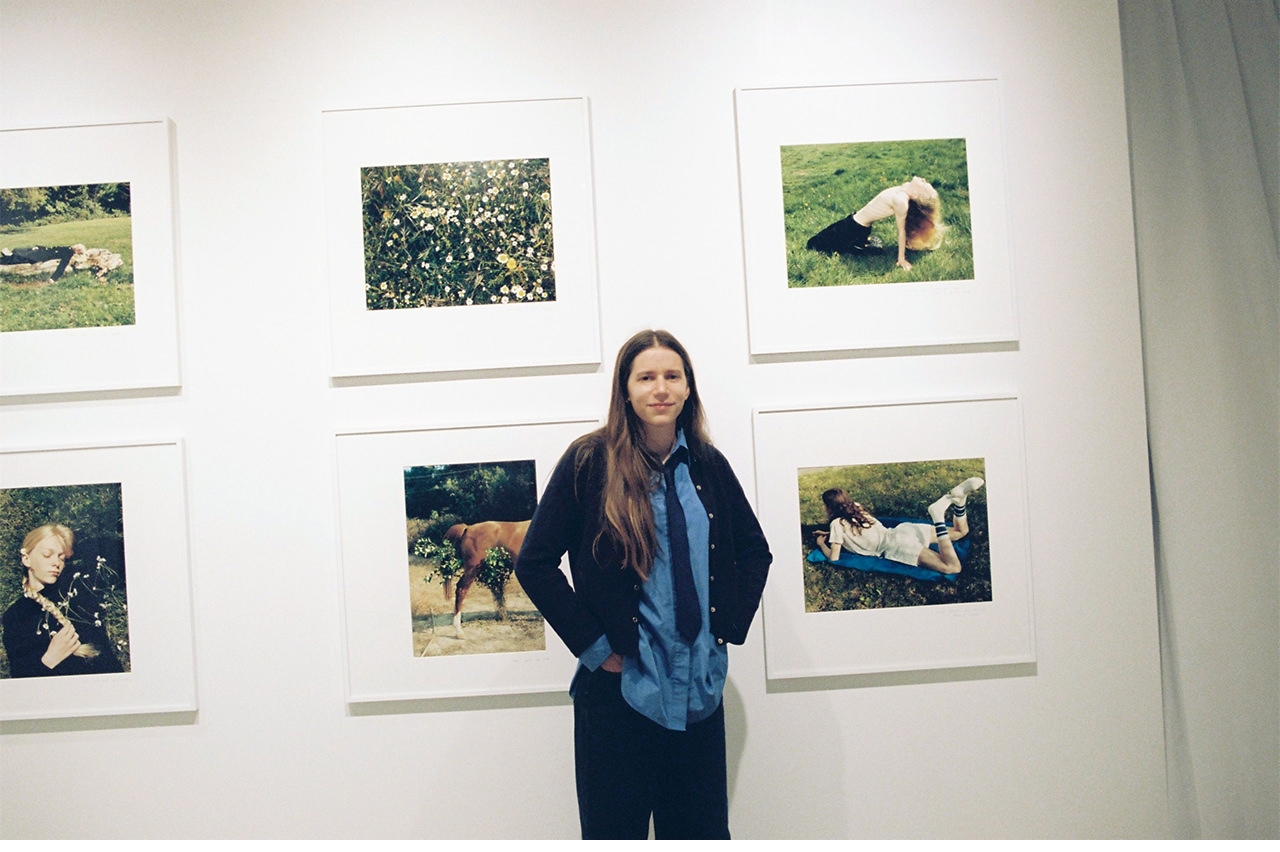
——I felt the main visual was a surprising work in the series, but please tell us why you chose this work.
"It was one of the proposals from the PARCO MUSEUM TOKYO side, but I didn't want to choose a piece that would tell you all about the contents of the exhibition. I thought that it would attract people's interest by dareing to focus on visuals that make them think what this is in mystery. The pants in the photo are the bottom of the sailor suit, but they are simple visuals that are involved in the theme and do not implant any extra expectations or images to people. This work was taken in the portrait series of "Dazed" magazine. I often do things that I don't need while shooting advertisements and magazines, and then publish them as my own work."
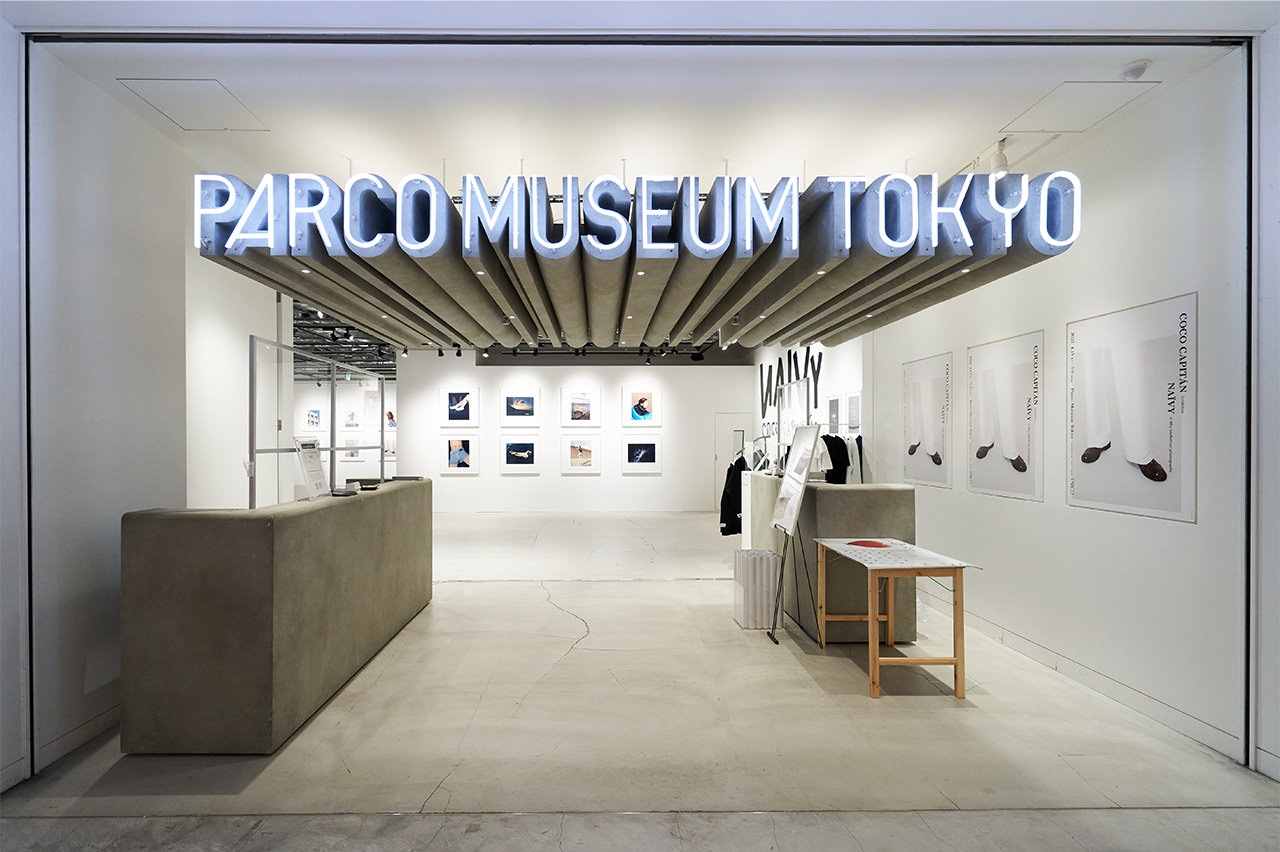
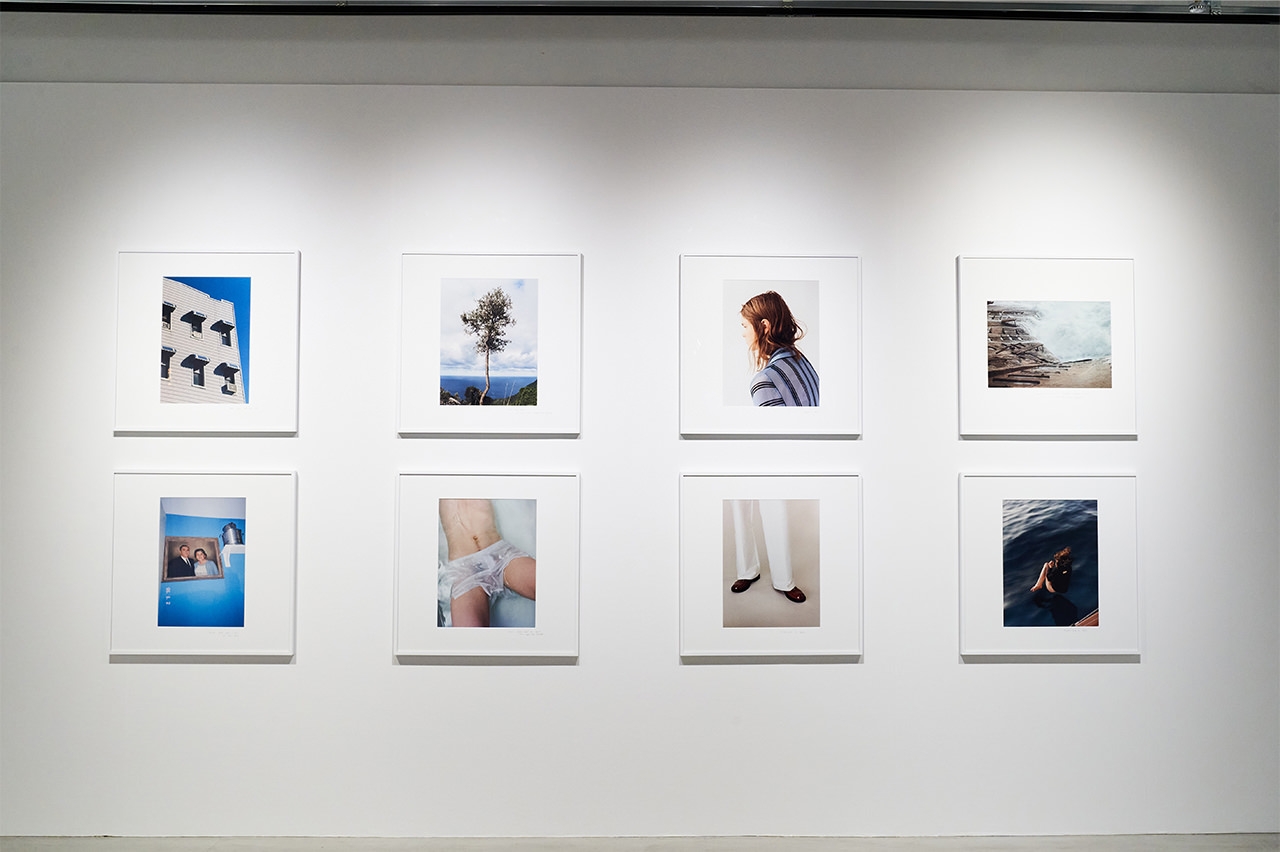
——I heard that all the photos were hand-made C-type prints and were made with particular attention.
"Yes, it's a C-type print (chromogenic print). It's technical, but it takes a lot of time rather than hard. I project it on the paper to be transcribed from the top of the negative and wait until it is reflected in the dark room, but even if I want to change the color a little, I have to test it once and wait 10 minutes. It starts with cutting a large roll printed paper that only has Kodak and Fujifilm in a dark room according to the size of the photo. I worked in London and fortunately, I got the help of John McCarthy. He is a craftsman who has devoted most of his life to the development of photographs. I think that while working together, I was able to teach him all the knowledge he could have. In addition, the fact that it takes time to develop is an opportunity to reconsider your work. I was able to reflect my will in every detail and I was very happy to be able to work that way over time.”
——The dark blue color of the sea is also different from each photo, and it is very beautiful and impressive.
"I'm more focused on color than anyone else, so I use analog techniques that can't be digitally used to create each color. I can't use a photo shop in the dark room, so I raise the exposure to make this part look clear, but I hide this part and print it out.……And I was particular about putting out the various blues I wanted. Recent artists may be less likely to prefer analog work, but when they actually develop it in this way, the difference in finish is noticeable. With the help of John McCarthy, this was something we could do and it was done through a very complex process.”
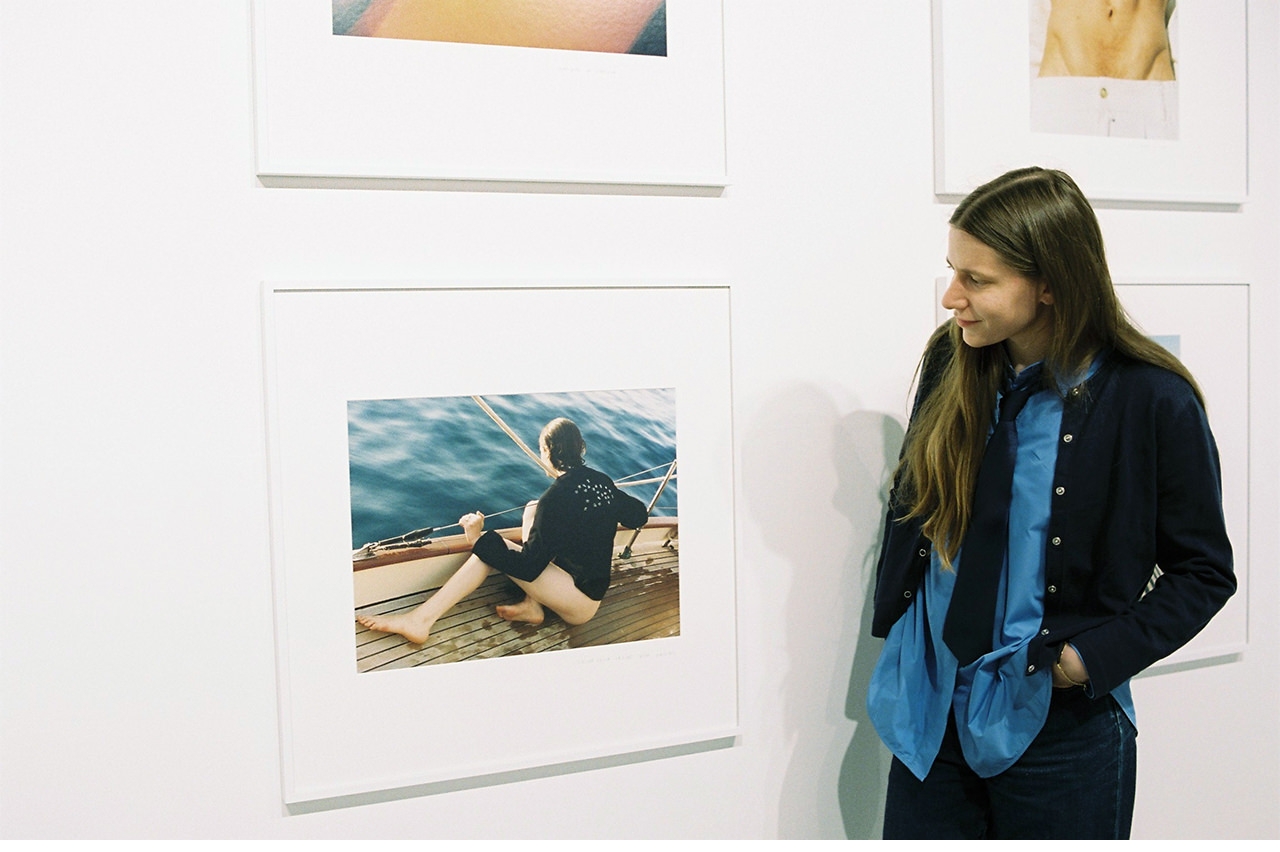
——Words are spelled under the photo, but how do you use the expression of photos and words?
"For this Naïvy series, I thought it was important to use both photos and words, so I decided to use both. But words are the beginning of most of my works, and when I think I can convey my feelings more, I express them with words only. If you think that people who don't dare to use words will tell you, choose a photo. The photos will be edited and edited into pieces.”
——I heard that there is a habit of spelling everyday moments as words. When did that habit start?
"I started writing my own words when I was 12 or 13 years old. Of course, it was different from the current style.……。 But since I was 6 or 7 years old when I learned to write, I loved drawing pictures and letters in notebooks. I still have that notebook. Since I was eight years old, I wrote a diary every day. Try cutting out pictures or collage them. I’ve been making my own notes since then.”
——Has there been any change in the customs since the advent of SNS?
"For me, it's better to write down on a notebook than SNS. Then, I scrutinize my words and upload what I think can be shared with everyone on SNS. I was originally a shy child, so I had a habit of writing out all my thoughts in a notebook once, reading them back, and then communicating them to someone. Therefore, I still write my thoughts in my notebook before posting on social media.”
——Is this your first visit to Japan? Do you have a favorite place in Japan?
“This is the third time. Japan may be my favorite country. I am also interested in various cultures in Japan. I always go around architecture and gardens, and I like the attention and humility of the details. It may be natural, stiff, or boring for Japanese people, but from my point of view, Japanese etiquette and daily rules are lovely and interesting."
——For example, what do you feel attractive about Japanese rules?
"I'm the type that I want to jump into what I'm interested in right away, so it's hard to wait. I am currently staying at a very nice hotel in Japan, and of course I am not dissatisfied with the service, but for example, when I wake up in the morning and ask for room service because I want to eat coffee and croissants, I don't tell them I want them to bring them right away, but I somehow understand them and bring them right away. But in Japan, you will be politely told, "Your breakfast will be prepared in 30 minutes" and you will have to wait. But if you wait properly, the service person will come and arrange breakfast neatly. There is always a process in Japan where you have to wait, but if you wait, you will do it properly. I felt that the people of Europe and the United States were in a hurry, and that they would lead a more peaceful and calm life in the customs and order of Japan. I love the Japanese rules because I feel respect and compassion for people."
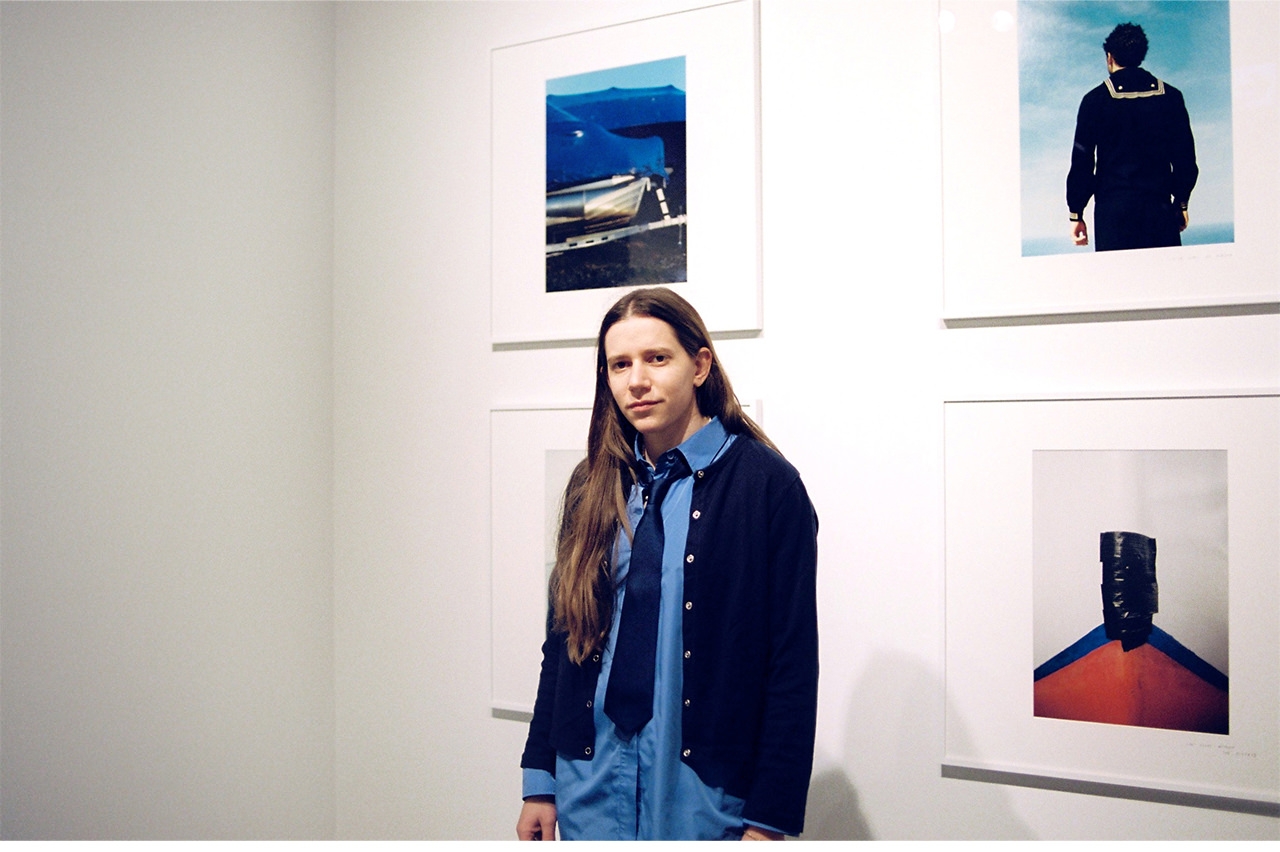
——I heard that you have a collection of ties. Where did you buy the tie you wear today?
“I found it yesterday in Don Quijote. I'm sorry that it's not a fashion brand (laughs). I think it's a tie for Japanese high school girls' uniforms, but for me, the tie is very thin and short in size, so it was perfect. There are many ties for men, so I can't find anything that suits me easily, so I'm always looking for them. I have about 40 collections, and most of them are gifts given by friends who know me."
——Finally, please tell us about your future activities.
“We are planning to have another exhibition in London in September. In addition, we are focusing on launching a fashion and homewear brand called Capitana (a female noun of Capitane). In fact, all the goods sold at this venue were directed by me. Under the theme of what I would like to wear, I was particular about the simple design while giving a strong message. Art, including my own works, is expensive, and it is difficult to purchase unless you are rich. It is difficult for young people to buy originals, but they can buy them with T-shirts. I love manufacturing, so I want you to develop practical items at such a price that is easy to pick up and enjoy art.”
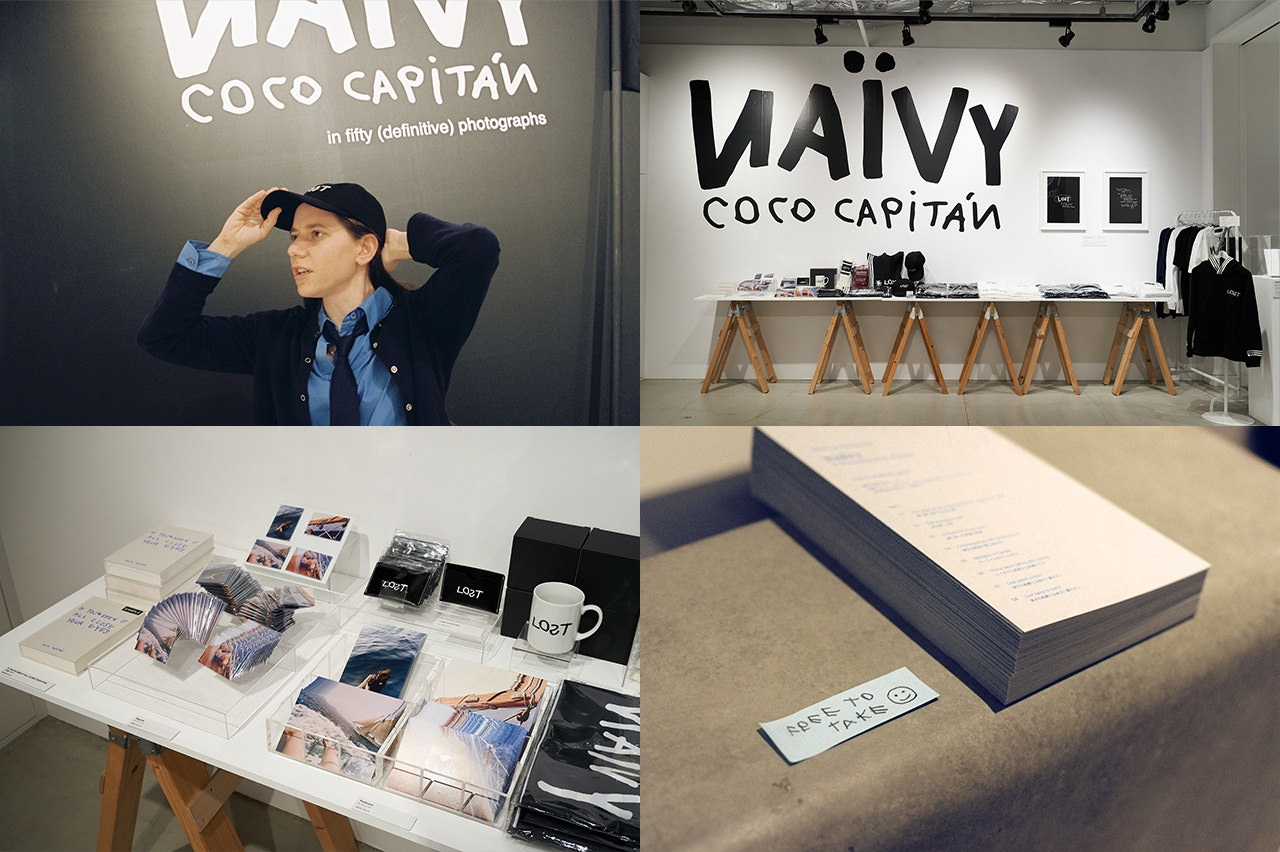
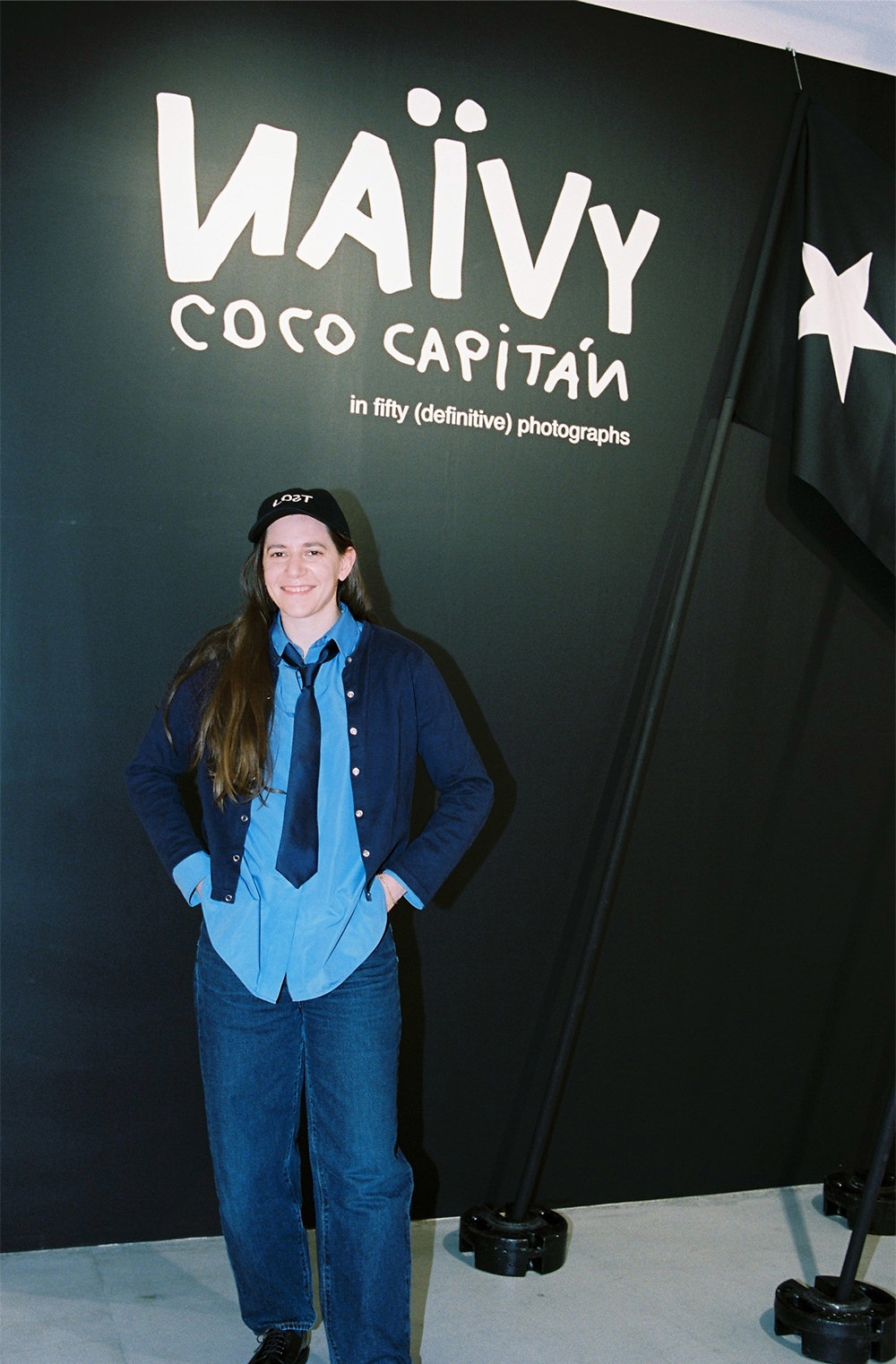
Coco, who sometimes spoke humorously with honest and frank attitude. After the interview, we toured the Shibuya PARCO building, searched for favorite ties, and visited GUCCI and A.P.C., where we had experience in collaboration. She creates works in a variety of ways, such as photography, painting, and language, and also launches an original fashion brand, and will continue to show us a new world of art.
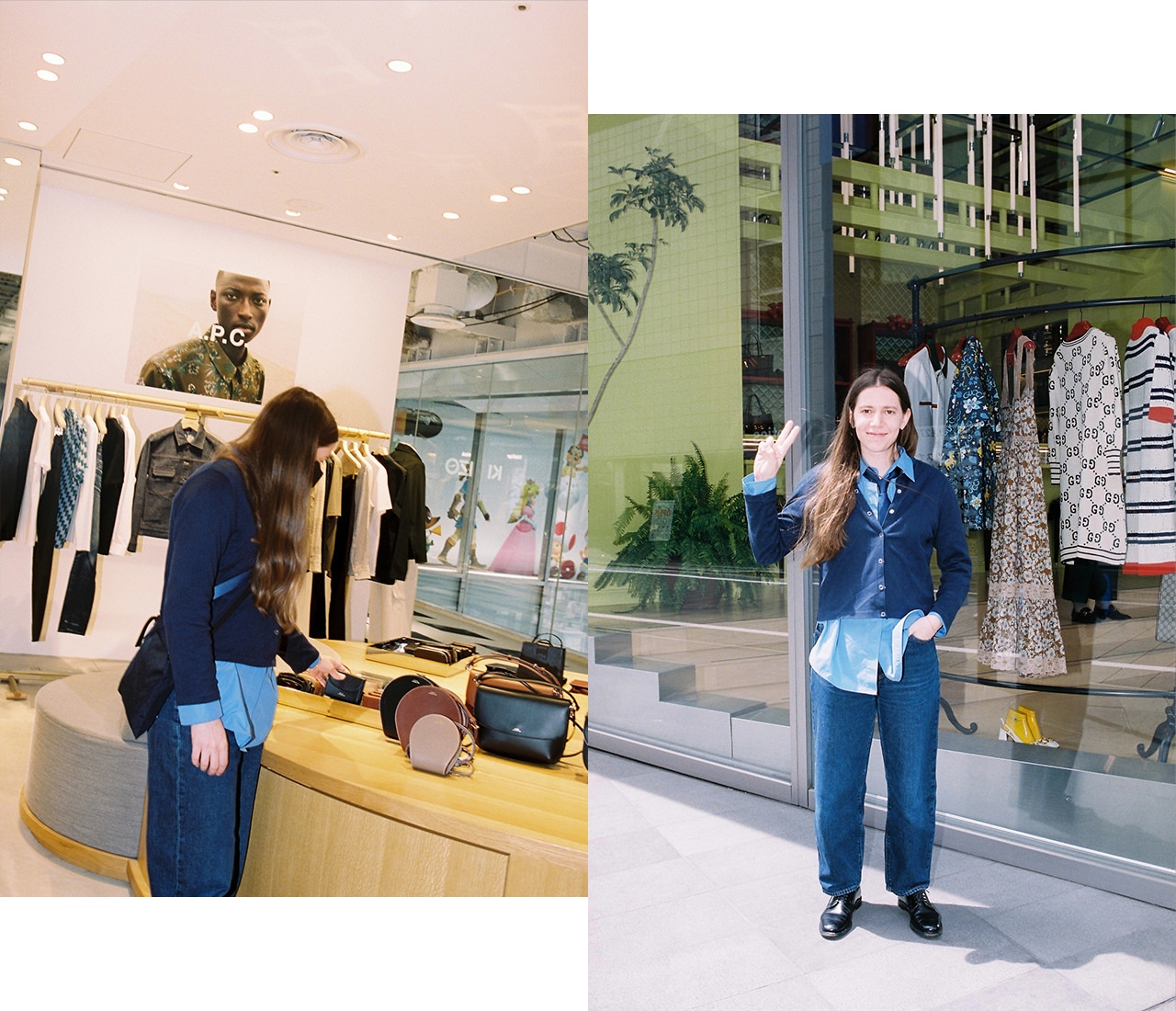
- Exhibition
- Coco Capitán「NAÏVY: in fifty (definitive) photographs」
- Venue
- PARCO MUSEUM TOKYO (Shibuya PARCO 4F)
- Exhibition Period
- April 15 (Friday) - May 9 (Mon), 2022
- Time
- 11:00〜20:00 ※Entrance is until 30 minutes before closing time. The last day is closed at 18:00.
- Entrance fee
- 800 yen / Preschool children free
- Organizer
- PARCO
- Planning and production
- PARCO / Asu Nakanishiya (ASHU)
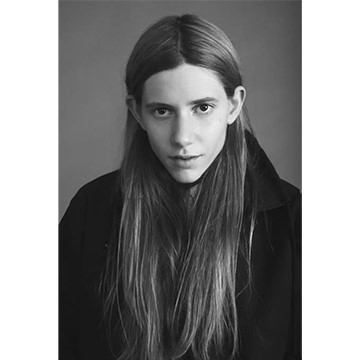
Coco Capitán (Coco Capitán)
Born in Seville, Spain in 1992. He works between London and Mallorca. He completed his master's degree in photography at the Royal College of Art in London in 2016. Her art work spans the world of fine art and commercial art, and her works include cross-border productions such as photography, painting, installation and language. Recent solo exhibitions include "Naïvy" (Maximilian William Gallery / London / 2021), "Busy Living" (European Museum of Photography / Paris / 2020), "Is It Tomorrow Yet?" (Obayashi Museum of Art / Seoul / 2019), and group exhibitions include "Infinite Identities" (Heise Marseille Museum of Photography / Amsterdam / 2020). His work is housed in the collections of the European Museum of Photography and the Heise Marseille Museum of Photography. Naïvy, If You've Seen It All Close Your Eyes, Middle Point Between My House and China Clients of commercial work include GUCCI, A.P.C., COS, BENETTON, NIKE, Samsung, DIOR etc. His work has been published in magazines such as The New York Times Magazine, The British Journal of Photography, Dazed, M, Le magazine du Monde, Document Journal, and Vogue. He is also a guest speaker at Cambridge University, the Royal College of Art, Oxford University, the Manchester School of Art, London South Bank University, and Aalto University.
cococapitan.co.uk
